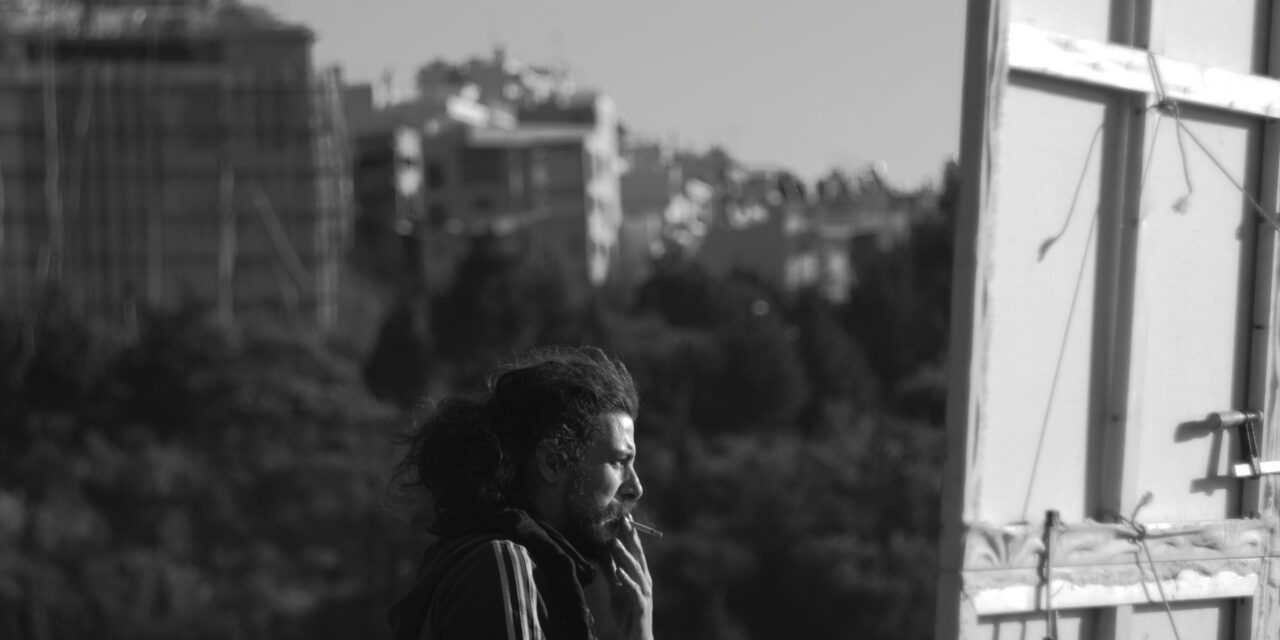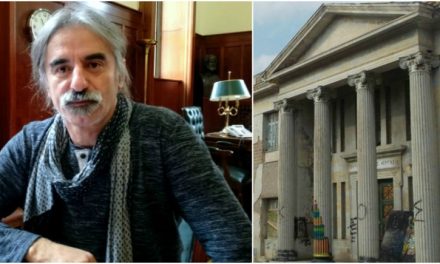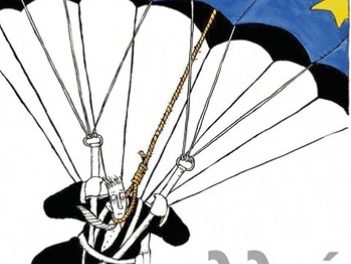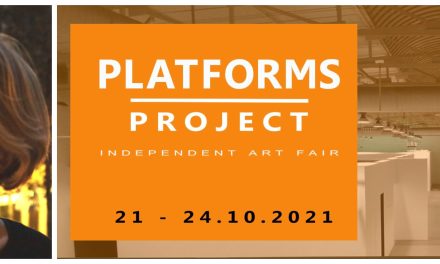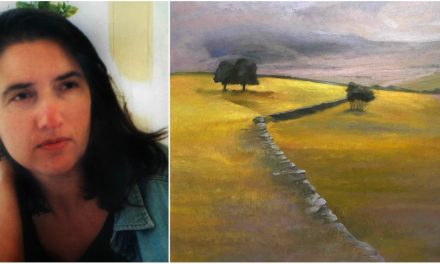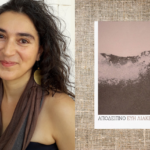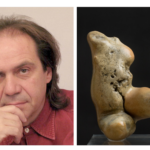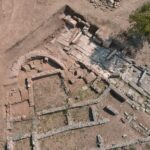Following the closing of his successful solo exhibition Beyond Concrete, Antonis Skabavirias speaks to Greek News Agenda about urban painting, the subject matter of his new quest. Through oil paintings and studies in watercolor and pencil, Skabavirias captures the pristine beauty and mysterious charm of Athens.

Sharing with the viewer the powerful emotion of viewing the city from above, the painter depicts Athenian landmarks, individual houses, squares, and vehicle-lined streets against the backdrop of the bright blue sky and seashores. These congested, constructed views of the places we live and work, through his distinct visual language, offer a unique perspective of this vibrant metropolis, highlighting the powerful energy of the Athenian landscape.
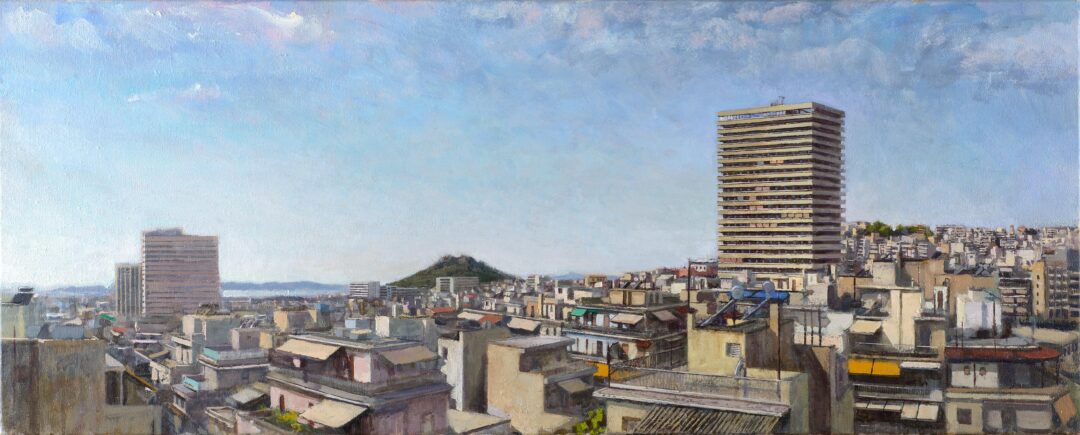
Born in 1984, Antonis Skabavirias studied renovation and restoration of buildings (2002-2008) and painting with George Rorris and Kalia Triantafyllou (2010-2016). In 2018 he presented his first solo exhibition, Windswept Terrains, and the following year he represented Greece at the Chateau de Fontainebleau Exhibition in France. He has also worked as an animator for the movie Loving Vincent as well as in marketing and magazine cover designing.

Your latest exhibition, Beyond Concrete, focuses on the urban landscape of Athens. How did you manage to capture a city that many consider to be so chaotic as an almost dreamlike landscape where calm, light and serenity prevail?
Thank you very much. To tell you the truth, there was no intention to embellish Athens. All I did was pick out some views of the city, in the same way, I would pick the most beautiful pebbles on a beach to decorate my house. Knowing the city in depth, I began to fall in love with it. The city itself contradicted the opinion I had about it, just like when we have formed a negative first impression of a person and then he slowly wins us over with his character. This city has a strong and charming character, that’s why, in order to discover it, we have to be open.
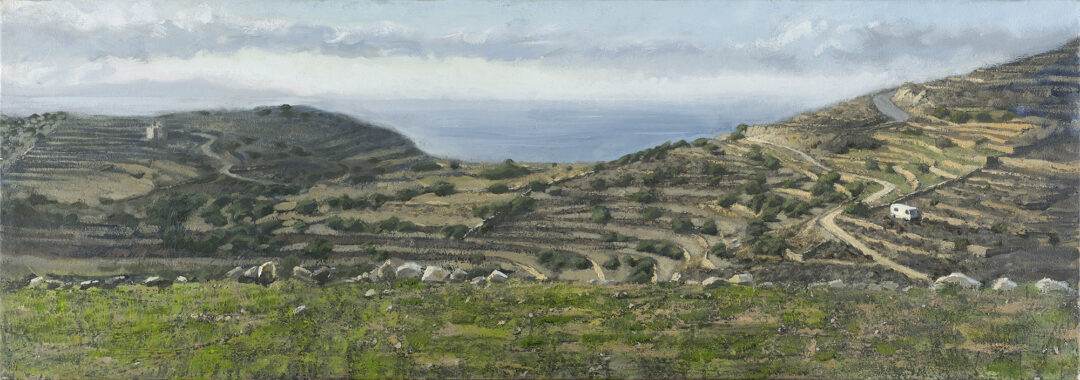
You paint from life. What are the advantages and challenges of this process?
Painting from life has to do with a belief that, to create a work of art, all senses, not just eyesight, have to come together and cooperate. The exposure of the human being to the environment is intended to transfer the human experience on canvas. The main advantage is that painting itself becomes a vehicle to gain experience. You spend weeks or even months in a particular place and you end up leaving feelings, hopes and dreams there. Thus, each place you work has a special place in your heart. You become for a time a tree, a rock or a concrete wall, a condition that, in a way, transcends human existence. Then you acquire friends and companions who help you carry the canvas up a hill or invite you on their rooftop for a time. That is a priceless thing. The challenges primarily have to do with the changing weather conditions as well as carrying equipment.

What inspires you as an artist? People, reality, emotions?
I think that what inspires me is life itself. All three elements you mentioned answer the question “What does it mean to be alive?”. Besides, the reason I got involved with the urban landscape is because it moves me as a field of activity and I am actually surprised that not many young artists are working on it. In this particular body of work and in the previous exhibition I did in 2018 with landscapes of Sikinos, the main inspiration is the landscape and how it has been shaped by the needs of the people who lived there. Emotion plays a very important part of course however it is not a starting point for me. That is, I don’t start a project to express a feeling. The emotion will find a way to settle in the work later on. After each day’s work, I will be able to identify it and understand its nature, and through it my psyche.
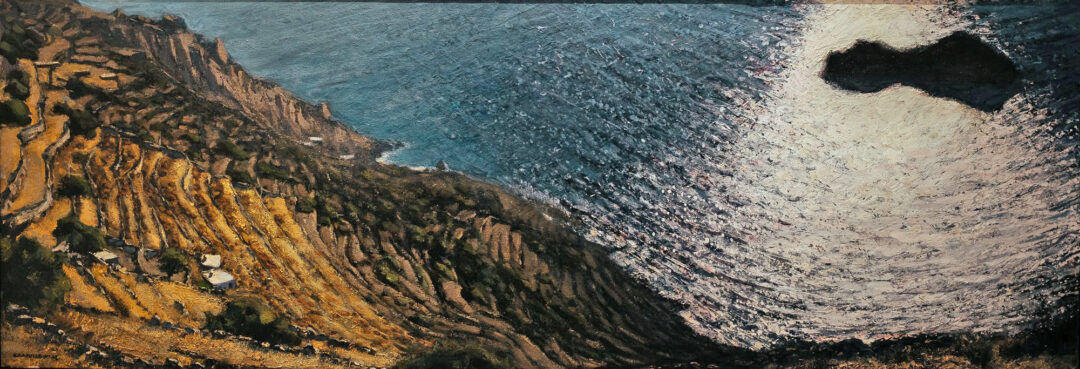
Your art reveals an artist who carefully observes and creates in an organized way. Is this the case?
The very theme of the urban landscape forced me to exercise my acuity. Organizing space in a structured way is to painting what rhythm is to music. No matter how beautiful a musical theme is, if it not played in the right way and does not obey the rest of the rhythmic pattern, it will be disturbing. The right geometry of space contributes to the peace that the eye needs. Otherwise, something kicks in. For all this to happen, the artist must discipline himself and acquire consistency in his work. Painting is made by gestures, not by thoughts, it is first and foremost an act. Ηowever, until I discover the next theme that moves me, I intend to work in a more experimental and free way.
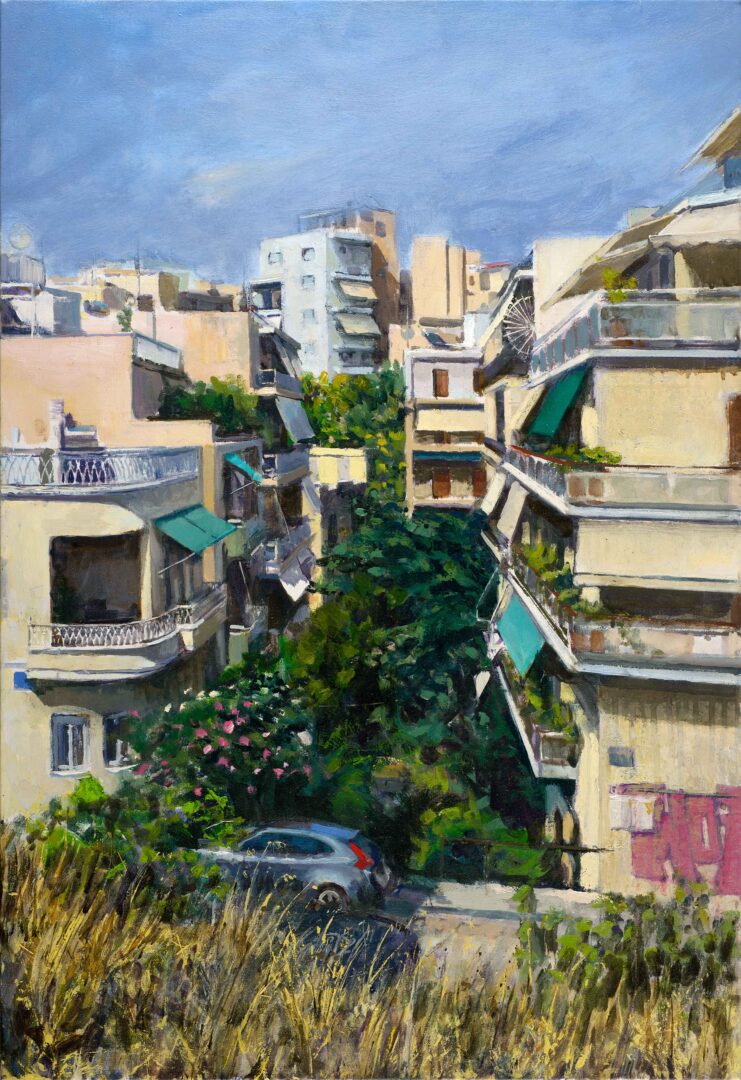
The starting point in your works is reality itself. What is the ultimate goal?
The starting point, as you mentioned, is the inspiration, that comes from reality. But reality itself reveals various versions of it, depending on how you approach it. Our perspective towards something is very important. Personally speaking, for example, after a tragic personal loss, I felt completely disoriented. So I started to paint the city in an open and wide-angle way, in a way I wanted to “embrace” it. By the same pattern, putting the lines in order, I tried to do the same with my soul. These interpretations, of course, come later on, when time has passed and we take a distance from the work. Painting is a language of communication. A language that may become too simple, like a prayer towards the ideal, imaginary being it is addressing.
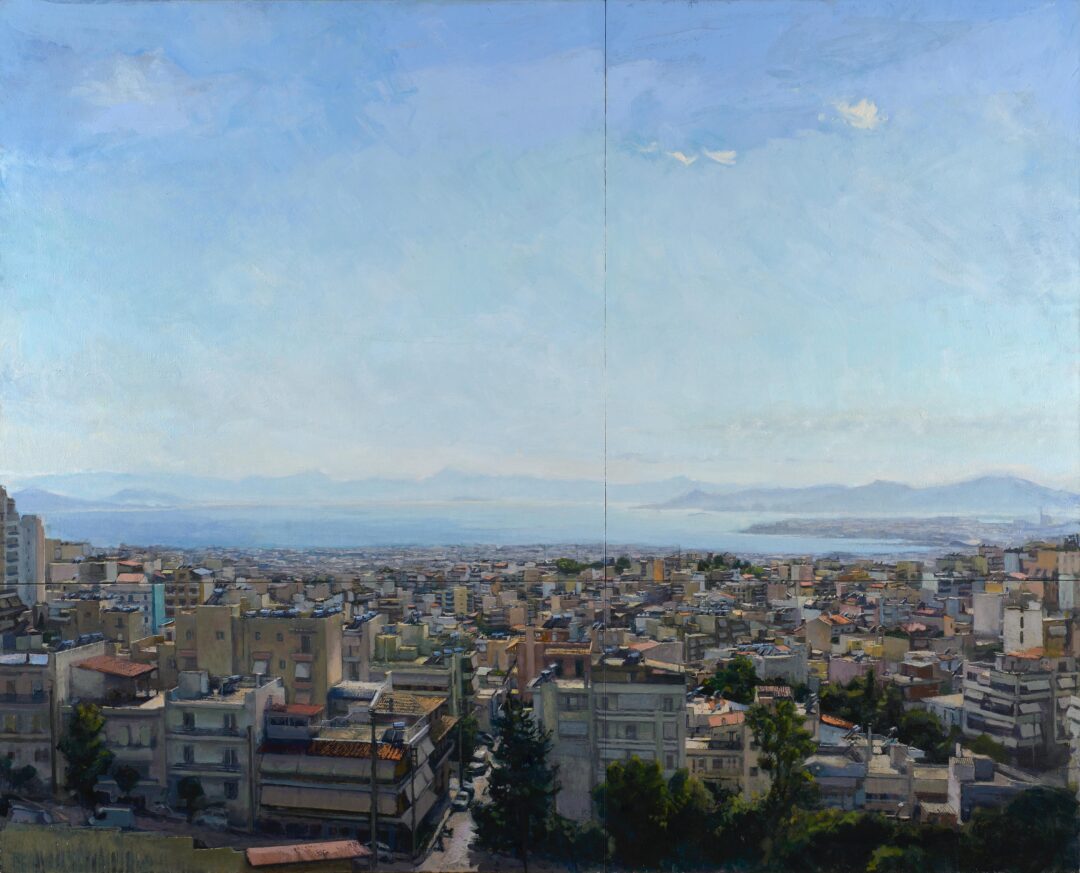
Does art, in your opinion, reflect, denounce or deconstruct? What is your opinion of non-representational art?
Art has proposed a variety of answers to these questions, always within the time frame we are referring to. In my opinion, high art captures but also falsifies. It denounces but also reconciles. It deconstructs to rebuild. For someone that wants to place himself in the long history of human art and does not renounce the past, the boundaries between representational and non-representational art are not so strict. Since it has been the quest of mankind to explore this aspect of art and great works have been made, it is now part of us. As far as I am concerned, having studied and loved these works, I choose to use similar methods in my painting. I do not perceive them as two different perspectives. After all, the aim is to transform matter into something spiritual.
*Interview by Dora Trogadi (Intro photo by Vassilis Politis)
Read also via Greek News Agenda: George Rorris: “A painting is the sincere revelation of one’s soul”; “I was and I remained a scholar and a student“ at the Yannis Tsarouchis Foundation; “Michalis Economou. The alchemy of painting” at the B & M Theocharakis Foundation

